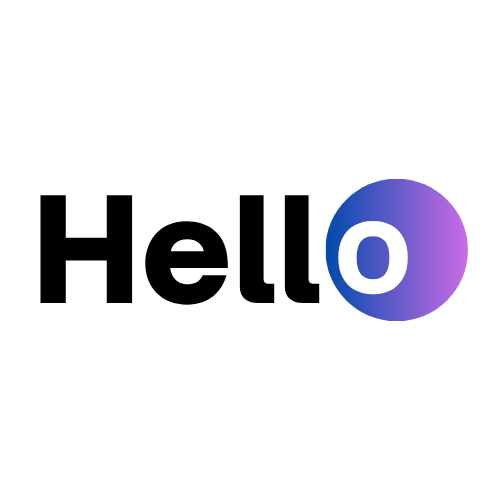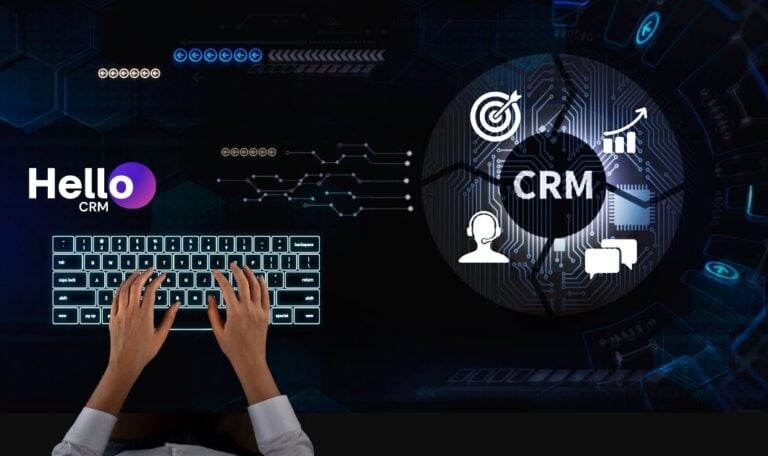Introduction
AI sales agents are no longer futuristic experiments — they’re a frontline asset in modern sales teams. Whether it’s qualifying leads, booking calls, following up, or even handling objections, AI agents can do more than ever before.
But just like any salesperson, your AI agent is only as good as the data it’s trained on.
An under-informed AI can sound generic, robotic, or even off-brand — hurting more than helping. A well-trained AI, on the other hand, can have natural, persuasive, contextual conversations at scale.
So how do you get there?
What Does “Training” an AI Sales Agent Mean?
Training an AI sales agent doesn’t necessarily mean writing code or building a neural network. For most CRM-powered AI tools — like Hello CRM — training means:
- Feeding the AI context from your CRM
- Providing conversation scripts, workflows, or logic
- Giving it real interactions to learn from (emails, call summaries, objections)
- Continuously refining its behavior through rules, tags, and feedback
Think of it like onboarding a new SDR:
- You wouldn’t throw them on the phone without CRM access, competitor insights, or pitch training.
- You teach them the product, customer personas, how to handle objections, and how to respond in specific situations.
An AI sales agent needs the same — but better organized, and always accessible via data.

Core Data Types Your AI Sales Agent Needs
Let’s break down the key data inputs that help your AI agent become smarter, more personalized, and better aligned with your sales process.
1. Lead and Contact Data
At the heart of any conversation is the who.
Essential fields include:
- Name
- Email & phone
- Company name
- Role/title
- Industry
- Location
- Source of lead (e.g., ads, referral, webinar)
- Lead score or engagement history
This helps the AI:
- Personalize intros (“Hi Sarah, I saw you’re with Bright Solutions”)
- Ask the right questions (“Are you the decision-maker for marketing software?”)
- Adjust tone based on lead type (startup vs. enterprise)
Where to get it: Automatically pulled from your Hello CRM contact record or form fills.
2. Deal and Pipeline Status
Your AI agent needs to know where the lead is in the buyer journey — otherwise, it may send the wrong message at the wrong time.
Key data points:
- Funnel stage (New, Demo Booked, Proposal Sent, etc.)
- Last activity date
- Assigned rep
- Tags (e.g., “Budget Objection”, “No Show”)
- Close probability or lead score
- Next step due date
This enables:
- Stage-specific outreach
- Re-engagement flows for stalled deals
- Triggered hand-offs to human reps
- Follow-ups like: “I saw you reviewed our proposal last week — would it help to schedule a quick call?”
Where to get it: CRM pipeline view or custom workflows in Hello CRM.
3. Conversation History
To sound natural and relevant, your AI sales agent must be able to reference past interactions.
This includes:
- Past emails sent or received
- Call summaries
- Notes from previous reps
- Objections raised
- Time since last contact
Why it matters:
- AI won’t repeat what’s already been said
- Can reference specifics: “You mentioned in our last chat that budget was a concern — would it help to explore a phased rollout?”
Where to get it: Hello CRM automatically logs multichannel activity (voice, email, WhatsApp, SMS) in each contact timeline.
4. Product and Pricing Knowledge
If your AI is going to answer questions or book qualified leads, it needs to understand what you’re selling.
Feed your AI:
- Product descriptions and USPs
- Feature sets and differentiators
- Pricing plans and payment terms
- Setup/onboarding details
- Competitor comparisons (optional)
This is especially important for AI agents handling:
- Discovery calls
- Objection handling
- Upsells and cross-sells
Bonus Tip: Use Hello CRM’s knowledge base integration or upload documents like pricing PDFs or onboarding decks to train the AI faster.
5. Objection Handling Frameworks
Cold leads don’t always say “yes.” Your AI needs to know what to say when it hears:
- “We don’t have the budget.”
- “Now’s not a good time.”
- “We’re using a competitor.”
- “I need to talk to my team.”
Train your AI with:
- Common objections and rebuttals
- Decision-tree responses
- Escalation rules (e.g., loop in a rep after 2 objections)
- Message templates with soft CTAs
Result: AI that handles pushback professionally, instead of giving up or guessing.
6. Calendar Access (For Booking)
If your AI agent’s goal is to qualify and book meetings, it needs access to your sales team’s calendars.
- Sync via Google or Outlook
- Define availability windows
- Pre-set meeting types (e.g., “15-min discovery”, “Demo Call”)
- Add confirmation and reminder messages
Hello CRM Integration: AI agents can offer times, confirm bookings, and send reminders — fully automated and personalized.
7. Compliance Settings and Opt-In Data
AI sales agents must stay compliant with communication laws (GDPR, TCPA, etc.).
Required inputs:
- Opt-in status for each channel (email, SMS, WhatsApp)
- Preferred contact time
- Unsubscribe history
- Consent logs
Hello CRM tracks and respects all opt-out and opt-in flags — so your AI doesn’t message someone who said “STOP” last month.
Where to Centralize This Data: Inside Hello CRM
The power of Hello CRM lies in centralizing everything your AI agent needs — without relying on dozens of tools.
With Hello CRM, your AI has real-time access to:
- Contact data
- Funnel stage
- Communication history
- Lead source and behavior
- Team calendars
- Opt-in preferences
- Document libraries for onboarding and pricing
And because it’s all native, your agent can update records, change lead stages, trigger messages, and more — just like a human rep would.
Training vs. Updating: How to Keep Your AI Evolving
Your AI agent isn’t “set and forget.” It needs regular feedback and updates to stay sharp.
Training your AI regularly means:
- Adding new scripts or responses as products evolve
- Updating pricing or onboarding timelines
- Reviewing AI call/email transcripts for optimization
- Flagging poor conversations for retraining
- Testing A/B versions of AI message flows
With Hello CRM, admins can:
- Edit AI workflows on the fly
- Review conversation logs
- Adjust triggers and responses
- Add new templates or FAQs with no code
Metrics to Measure AI Agent Performance
Track these KPIs to know if your AI sales agent is doing its job:
| Metric | What It Tells You |
|---|---|
| Response rate | Is the AI generating engagement? |
| Booking rate | Are leads converting to meetings? |
| Lead qualification accuracy | Are conversations producing sales-ready leads? |
| Escalation rate | How often is the AI handing off to humans? |
| Conversation length | Is the AI holding full interactions, or being ignored? |
| Sentiment score (optional) | Are responses positive, neutral, or negative? |
Hello CRM dashboards show these metrics in real-time, segmented by workflow, campaign, or audience.
Final Thoughts
An AI sales agent can be your best SDR — but only if it knows what you know.
With the right CRM data, clear structure, and continuous feedback, your AI becomes more than a message bot. It becomes:
- Your lead qualification engine
- Your follow-up machine
- Your meeting-booking powerhouse
- Your sales rep’s best friend
And Hello CRM gives you the tools to make that happen — with no technical headaches.
Ready to activate your AI sales agent the smart way?
Start your free trial or book a demo and learn how to train your AI with the data that closes deals.





